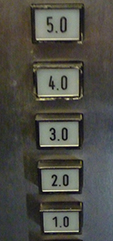
Fachbereich 4
Internationaler Bachelor Studiengang
Internationale Medieninformatik (Bachelor)
Informatik 3
Winter Term 2023/24

Info 3: Informatik III
Modern Software Engineering

|
HTW Berlin Fachbereich 4 Internationaler Bachelor Studiengang Internationale Medieninformatik (Bachelor) Informatik 3 Winter Term 2023/24 |

|
|
Info 3: Informatik III Modern Software Engineering |
||
|
Lab 3: Sequence Diagrams
|
We are going to practice drawing sequence diagrams today. Granville Miller has a great tutorial on sequence diagrams (unfortunately only in the Internet Archive) with a worked, step-by-step example. You might want to read this before coming to lab.
You will continue working with the same
partner(s) as last lab. BUT: You now switch your
scenarios with another team. You may have to have a three-way
switch so that every team is now working with scenarios that they
did not prepare themselves. Yes, I know it sucks. But this is was
happens in the Real World(TM) all the time, so we are
practicing now.
Review the scenarios you received. Do you understand them? If not, ask the other team for clarification and note down in your report any changes that you had to make to the scenarios.
Oh, and the product manager just decided that she definitely wants to have the possibility of people sharing their shopping lists with other members of their family. They still do not want to have their data kept in the cloud. And maybe they can start their shopping lists on their computer at home and then transfer the list to their mobile device. Is there a functionality for printing out the shopping list? Make any necessary changes to the use cases. Note in your report the changes you have to make.
Can you identify candidate objects and methods in the requirements? There are a number of processes that your use case authors should have detailed in their use cases. If they did not include these, you will first have to write additional use cases. You can use the use cases that you yourself prepared last exercise.
You need to draw sequence diagrams for at least four of the following use cases and as many use cases as necessary on the basis of the use cases you obtained from the other group. No more than two should be for use cases that your team specified:
I kind of like to use websequencediagrams, but you can use any tool you wish.
If you feel like it, you can continue with a sequence diagram for the additional use cases, or for others not listed here.
Your report is due at 22:00 the day before your CG exercise and should include all materials (including copies of the materials you obtained from another group), properly marked with the authors of these scenarios. Don't forget to include your own names on your report, a reflection for each team member, and post the materials in the Moodle area for each team member.